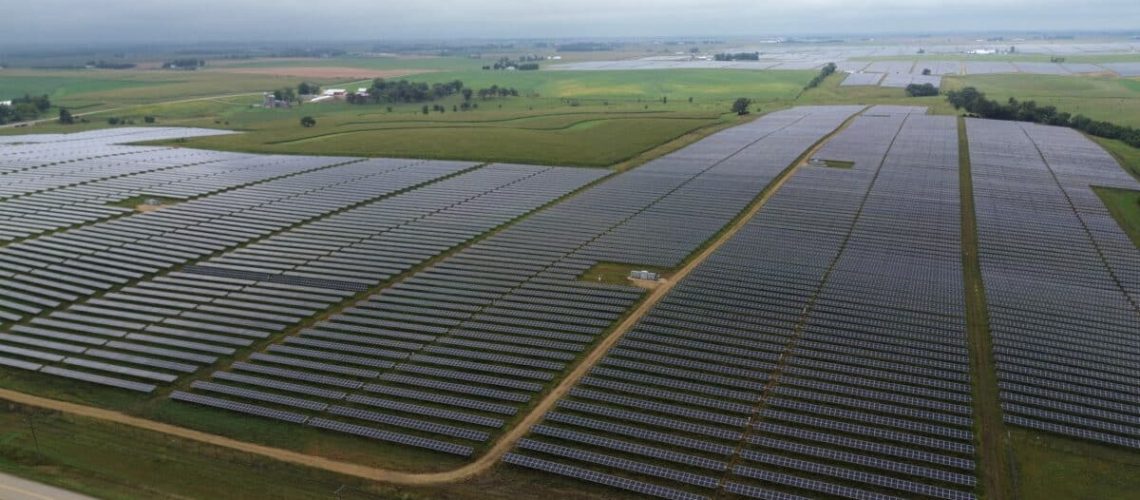The 300 MW project serves Madison Gas and Electric and WE Energies customers.
Madison Gas and Electric (MGE) and We Energies, two utilities operating in Wisconsin, announced that the state’s largest solar facility is now active.
The Bader Hollow Solar Farm is a 300 MW facility that was built in two 150 MW phases in Iowa County, Wisconsin. The first phase was activated in 2021, while the second phase began powering homes and businesses in the state in December 2023.
The facility, comprised of 830,000 solar modules, is large enough to power the equivalent of 90,000 homes. The tracker-mounted project includes bifacial panels, enabling the solar panels to absorb light from above, and from reflected light from below.
Bifacial panels are particularly beneficial in northern climates that have frequent snowfall. With a high albedo, or reflectivity, snow makes for a higher level of production on the back face of a panel.
“From frigid winter mornings through the hottest summer days, Badger Hollow Solar Park will play an important role in helping us deliver affordable, reliable and clean energy,” said Scott Lauber, president and chief executive officer, We Energies.
The project resulted from collaboration between the two utilities. The second phase is jointly owned by the two, with WE Energies owning 100 MW and MGE owning 50 MW. We Energies sister company, Wisconsin Public Service (WPS), owns 100 MW of the first phase of the park, and MGE owns the other 50 MW.
The facility spans about 3,500 acres. In April 2019, WPS and MGE purchased and acquired 150 MW of the Badger Hollow solar farm and the electrical tie in line for about $194 million. The facility is expected to employ 17 full-time staff members.
MGE said the project will help it make progress towards achieving 80% fewer carbon emissions from electricity use by 2030. The company generates and distributes electricity to over 160,000 customers in Wisconsin. Headquartered in Madison, the company posted a net income of $111 million in 2022.
Community solar
In addition to utility-scale projects like Badger Hollow, community-scale solar projects are expected to help Wisconsin grow its renewable energy economy.
According to Renew Wisconsin, 50% of Wisconsin households can’t access solar energy because they live in apartments, are renters or lack the appropriate roof. The Coalition for Community Solar Access (CCSA) wants to fill this resource gap. In 2022, it asked Forward Analytics to explore the economic benefits of investing in community solar infrastructure across the state.
“Based on the analysis here, construction and operation of the proposed solar facilities, which would generate 1.75 gigawatts of electricity per year when all facilities are operating, would contribute an estimated $2.49 billion of economic activity in Wisconsin,” said the report.



